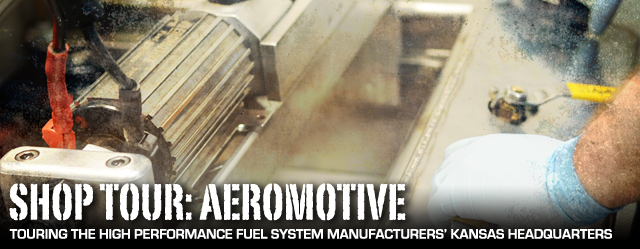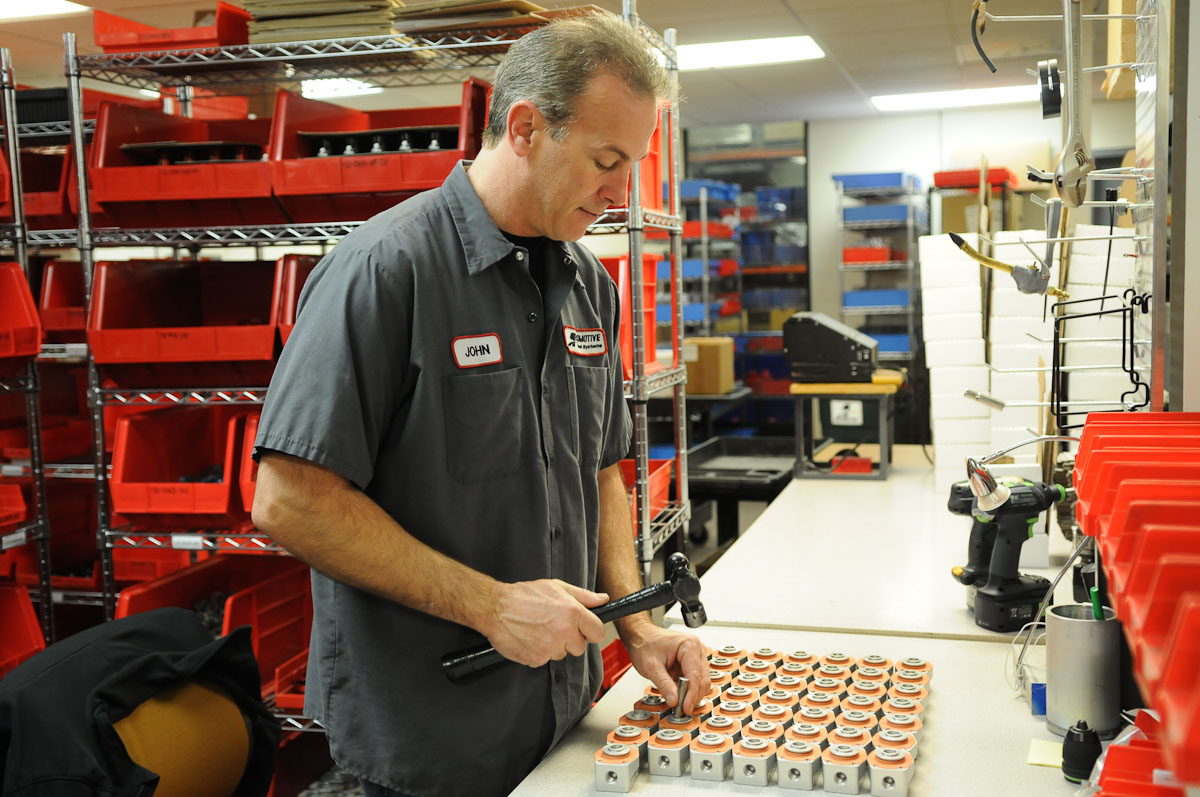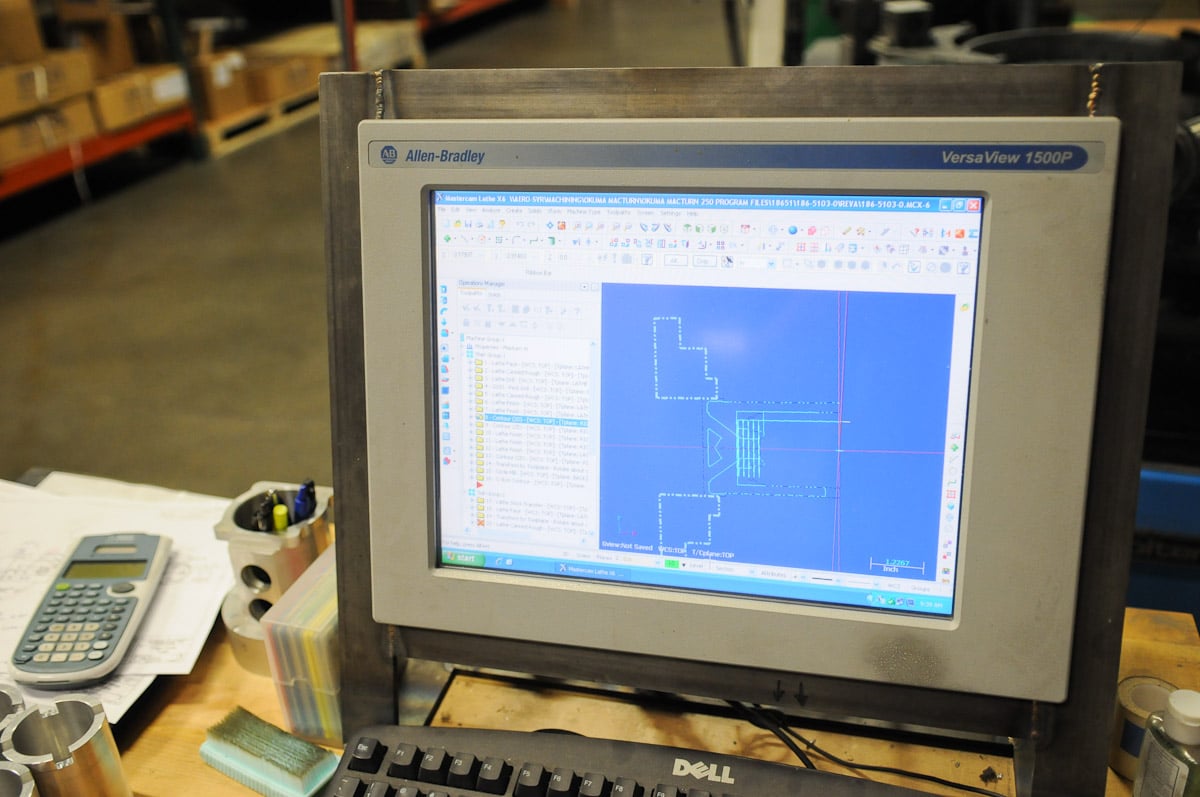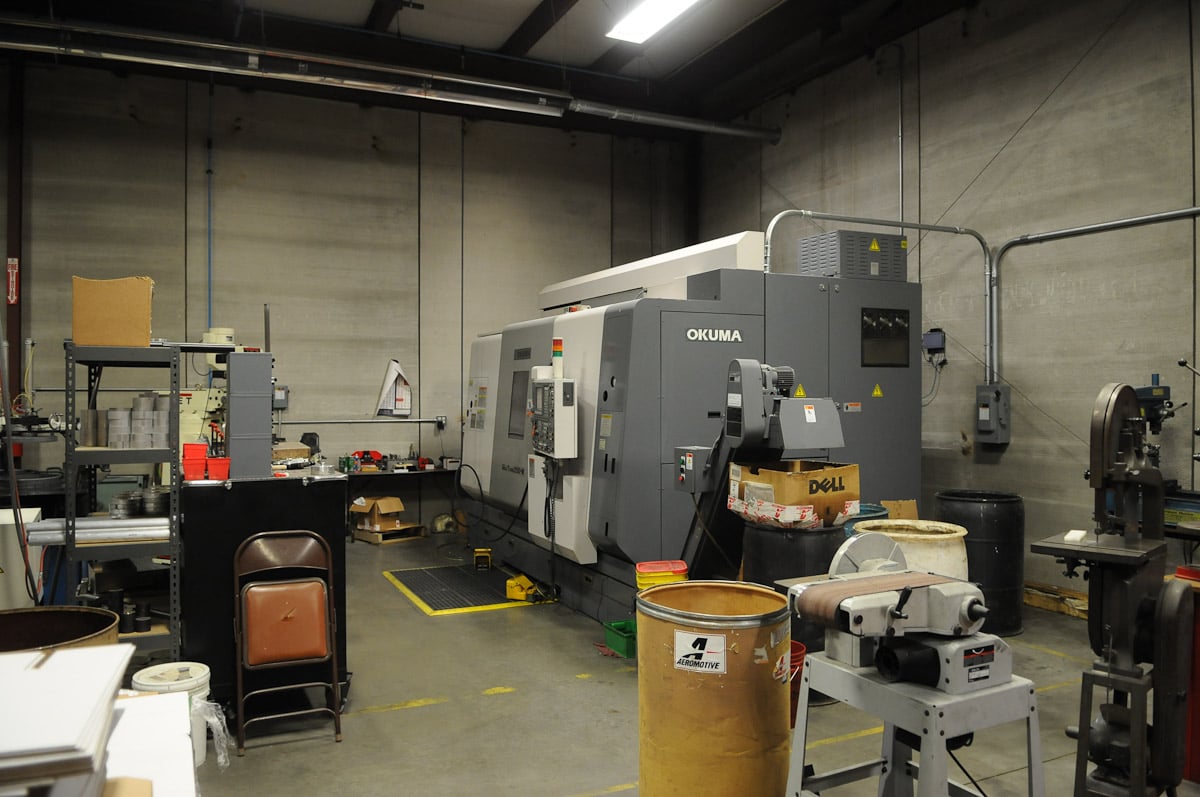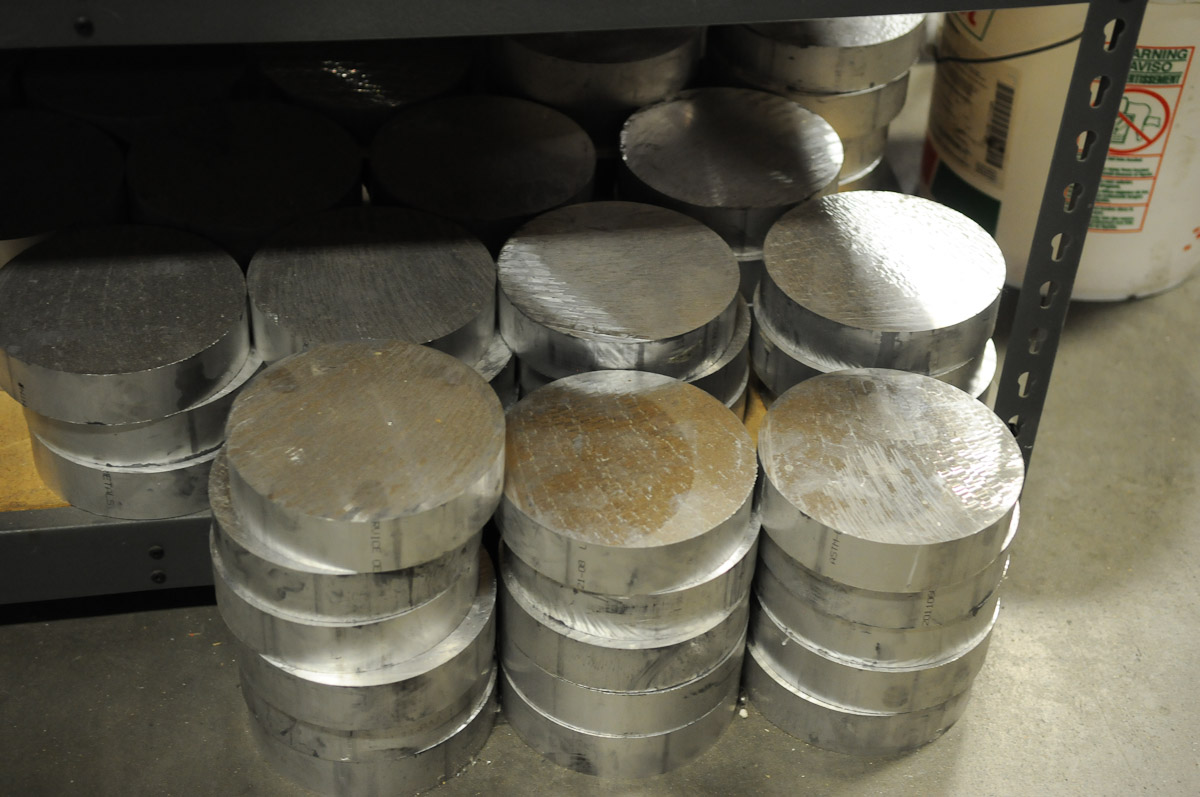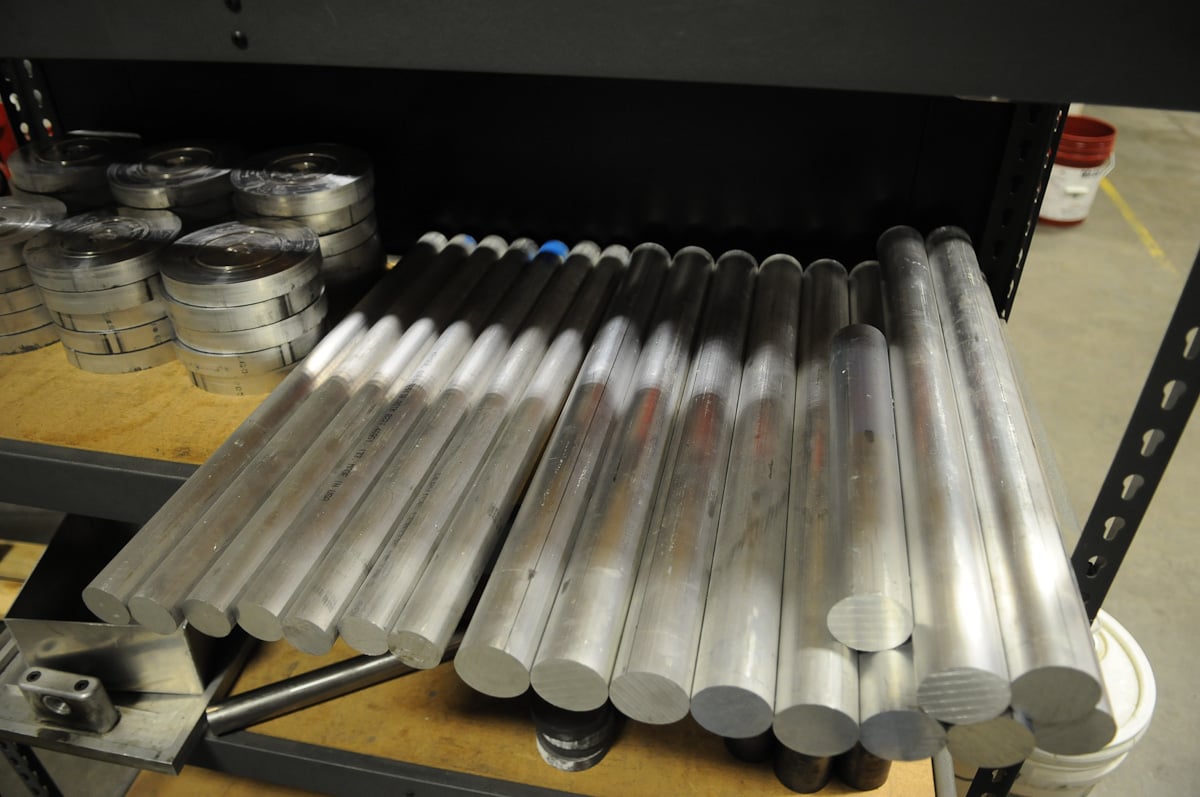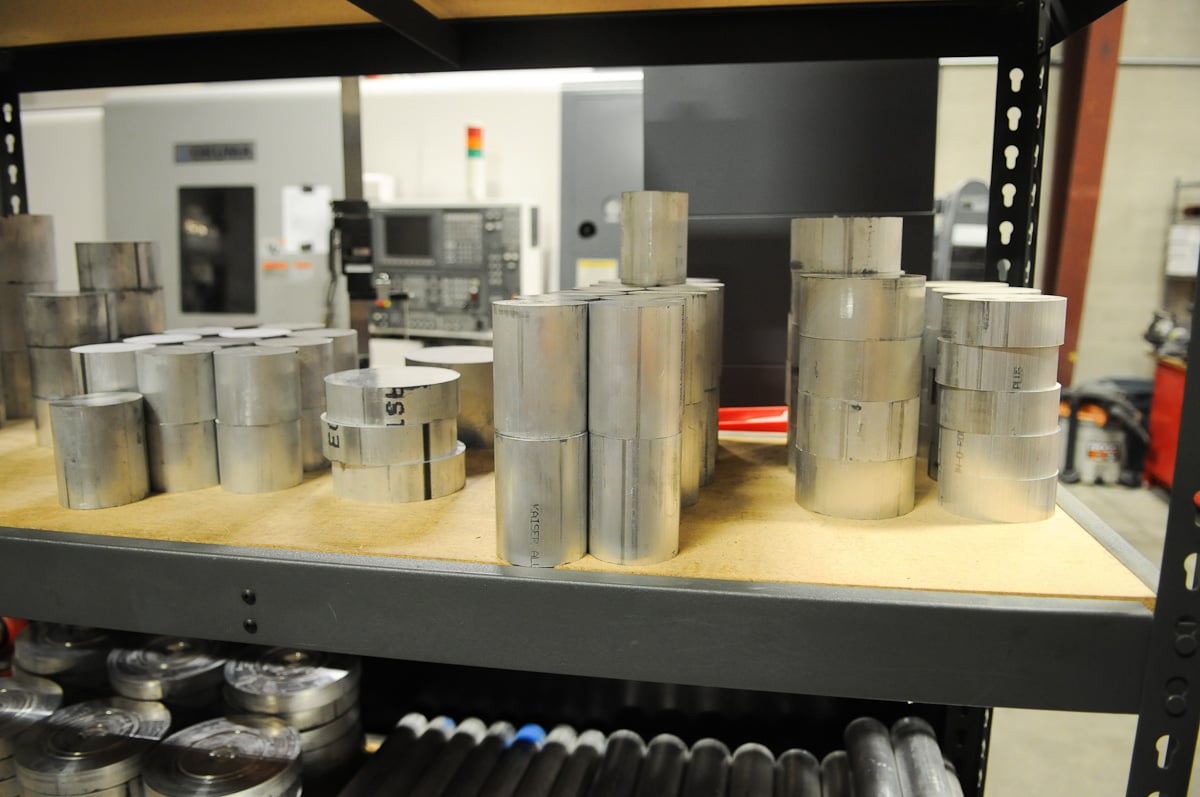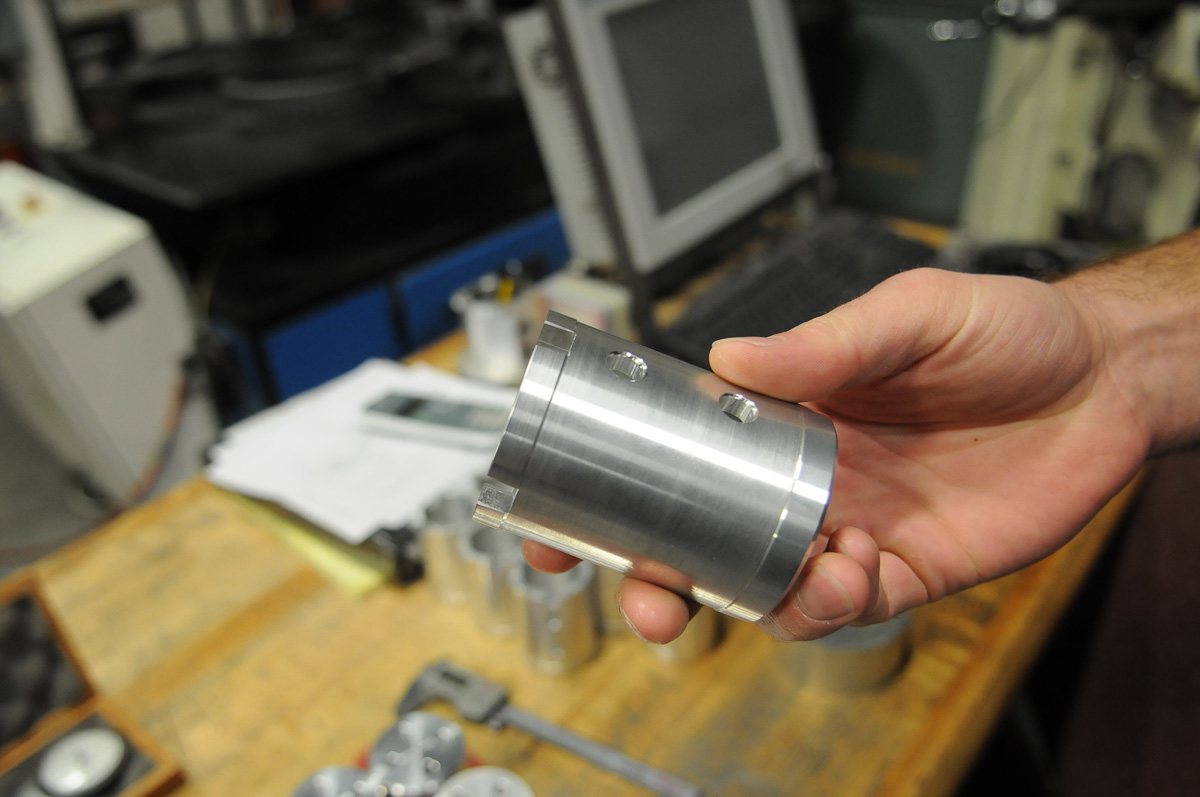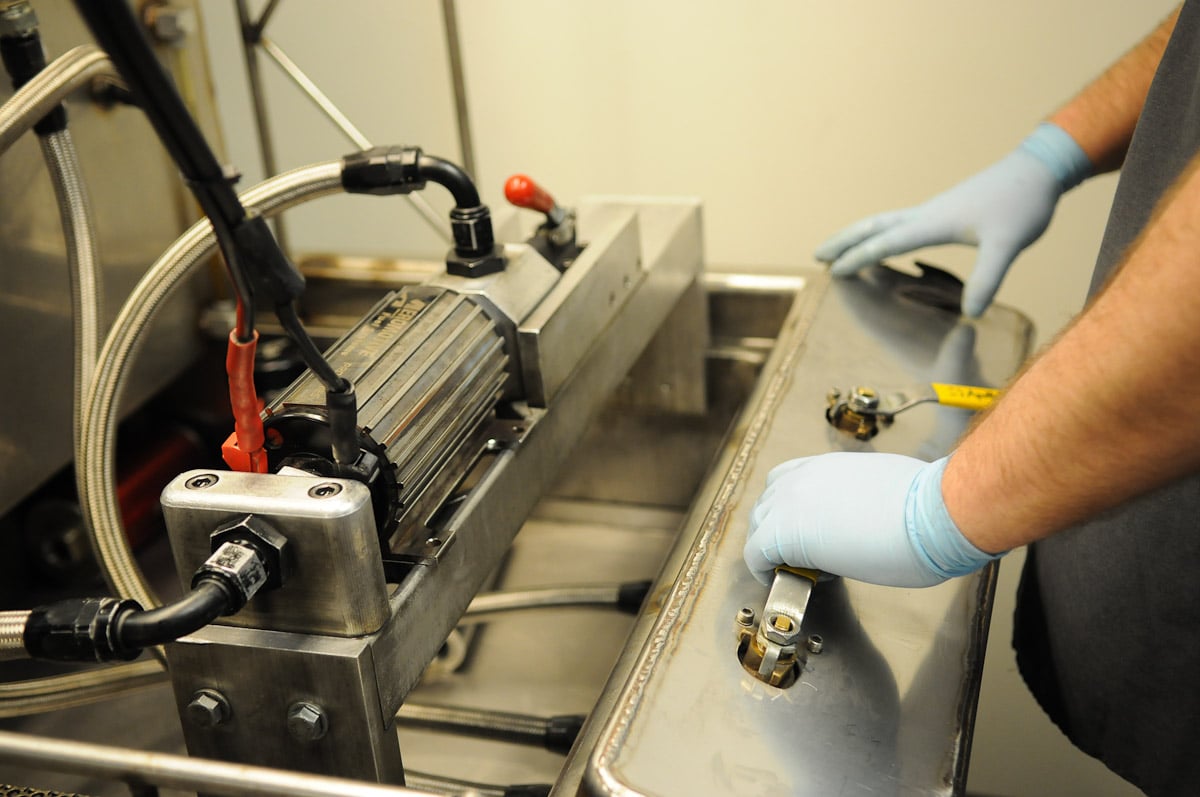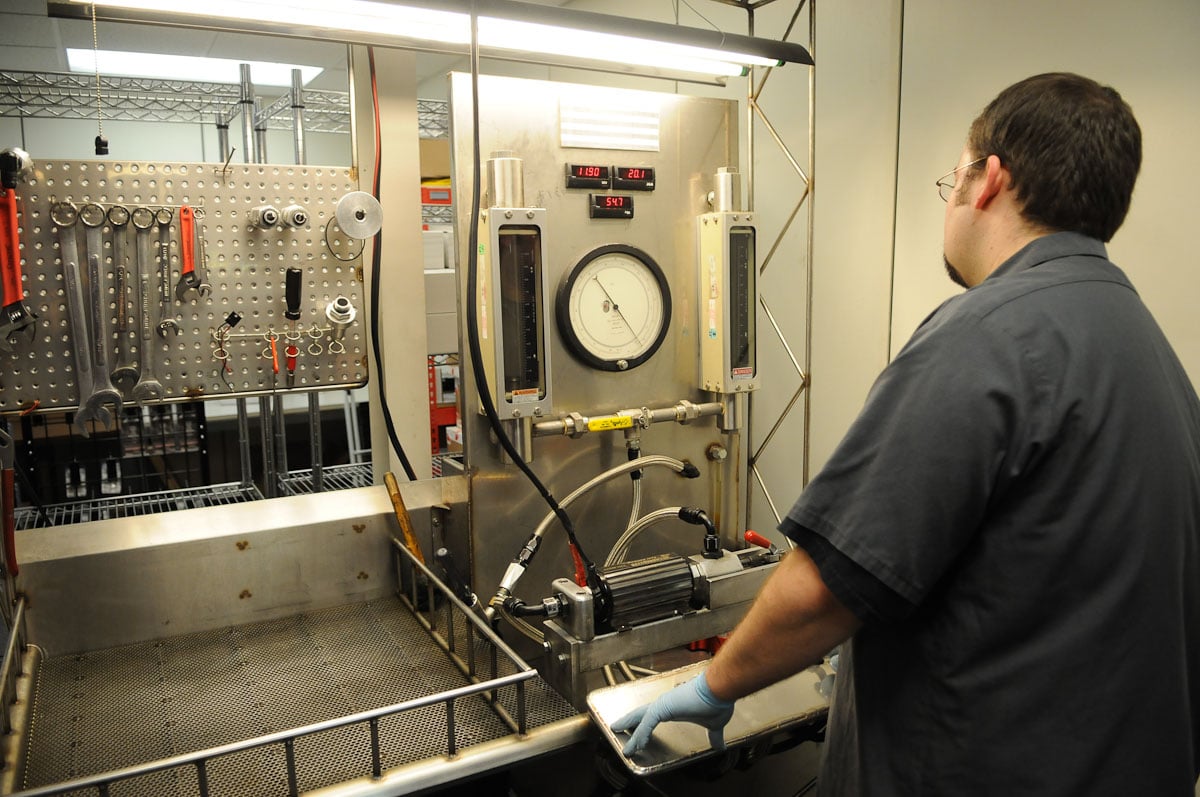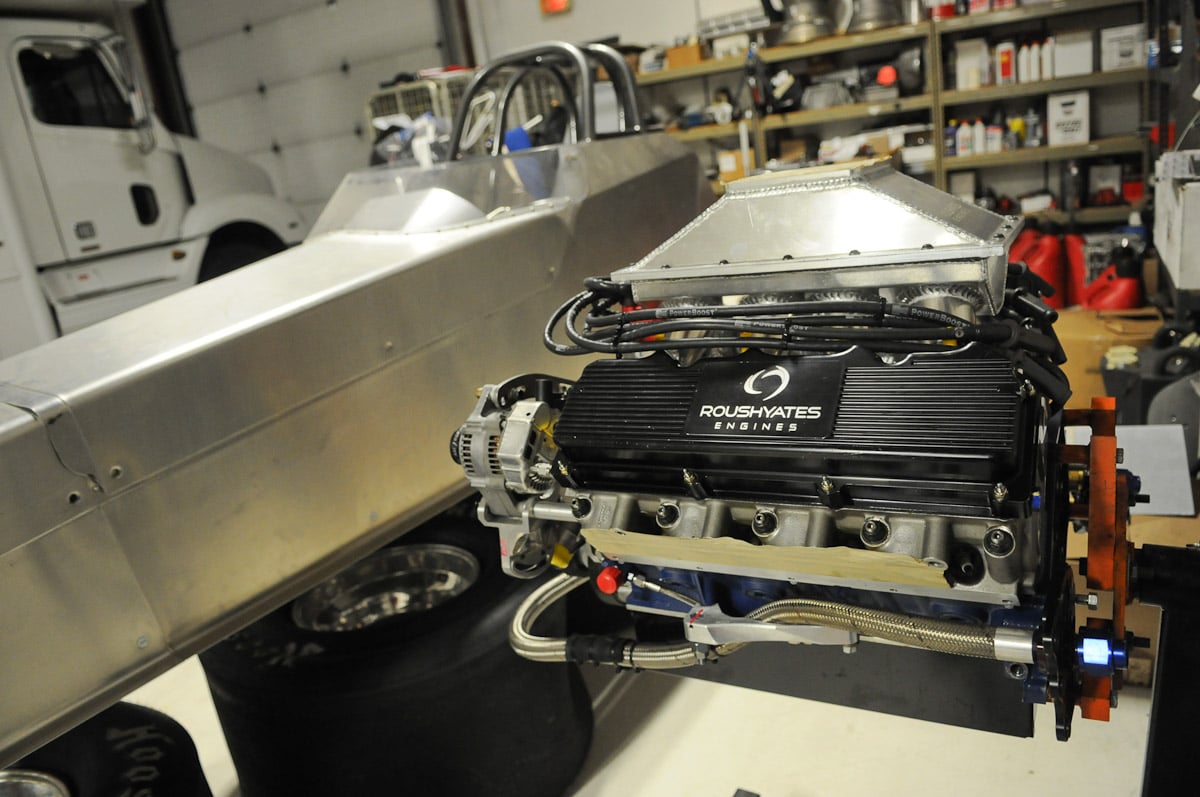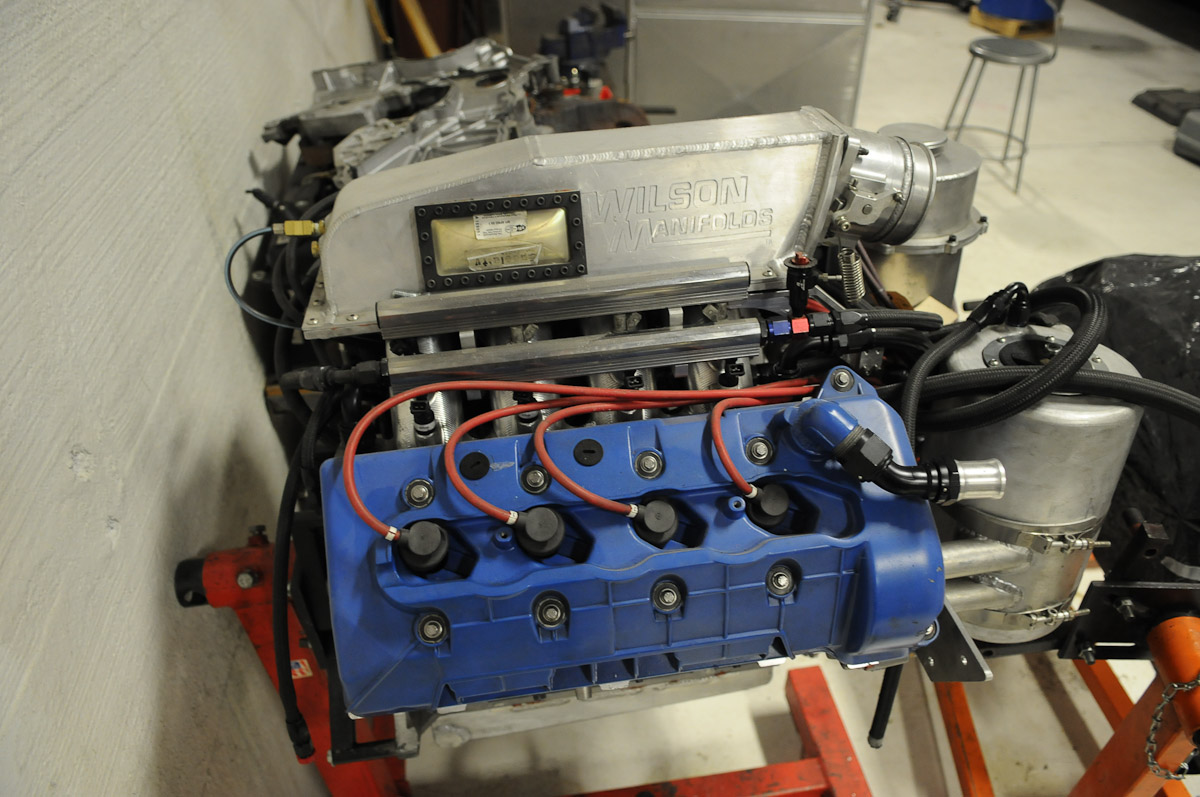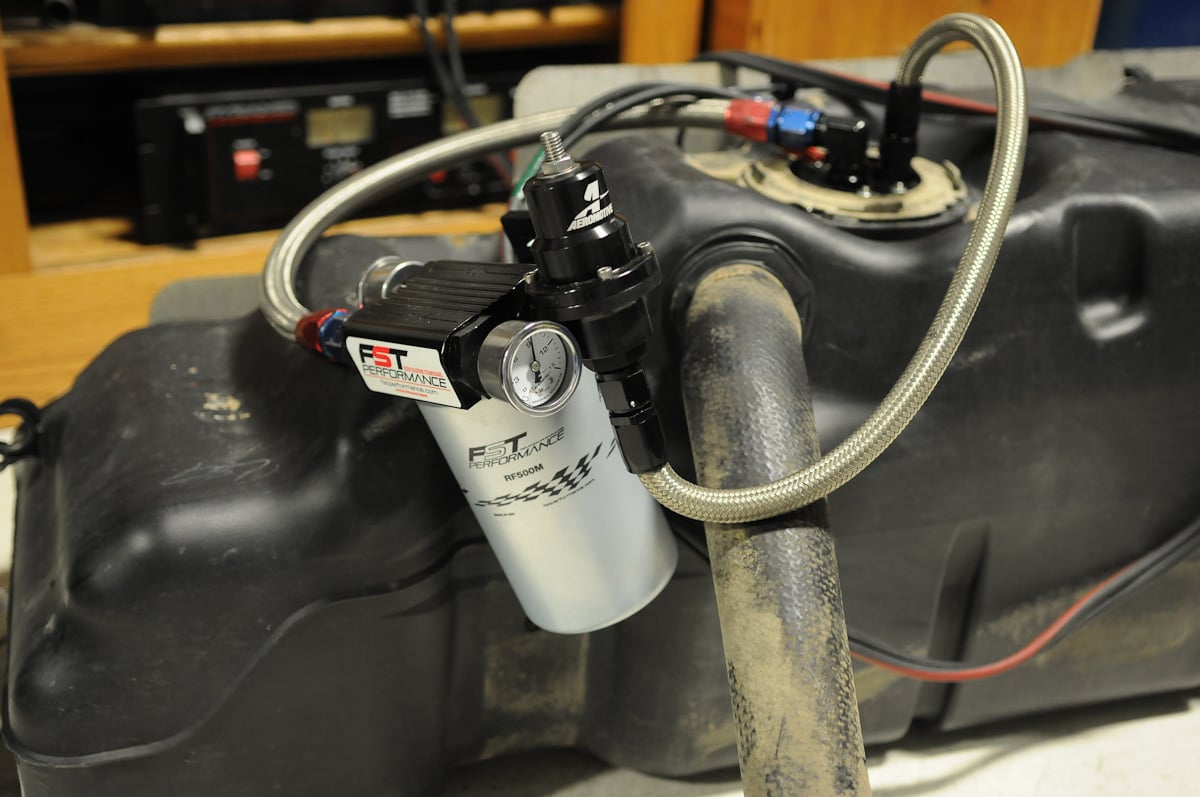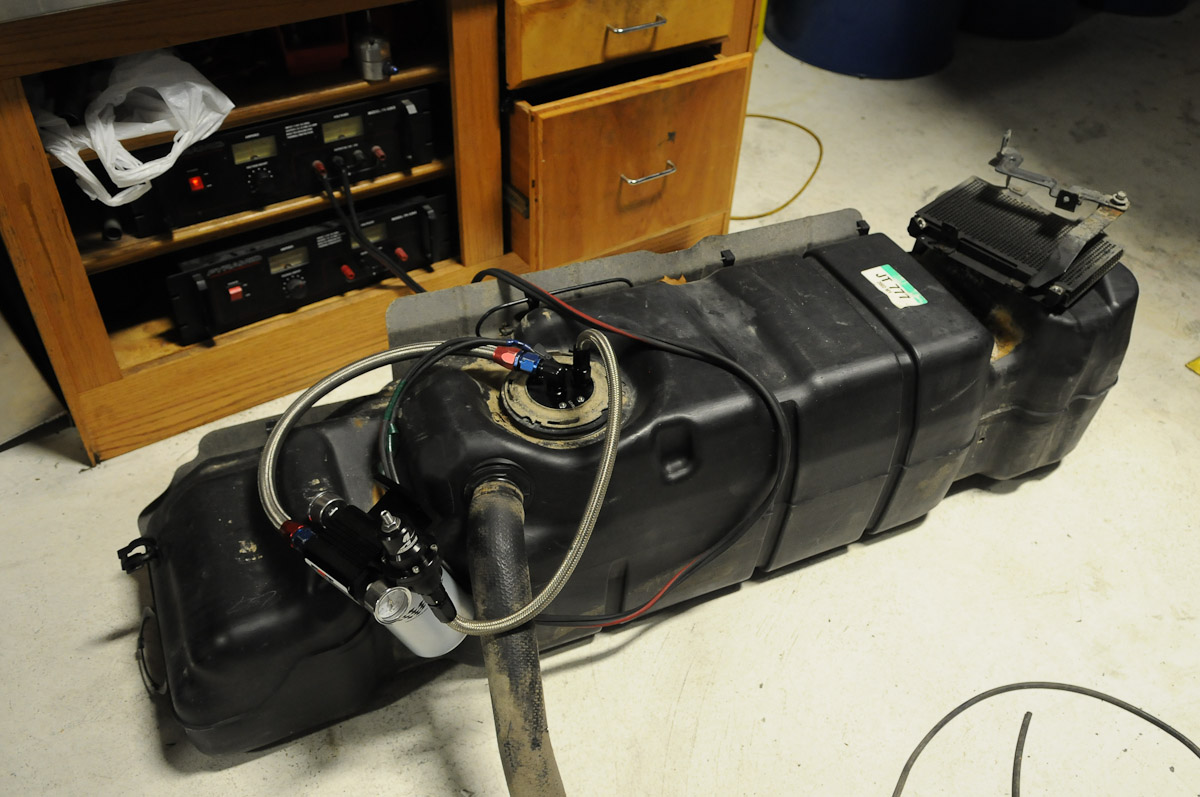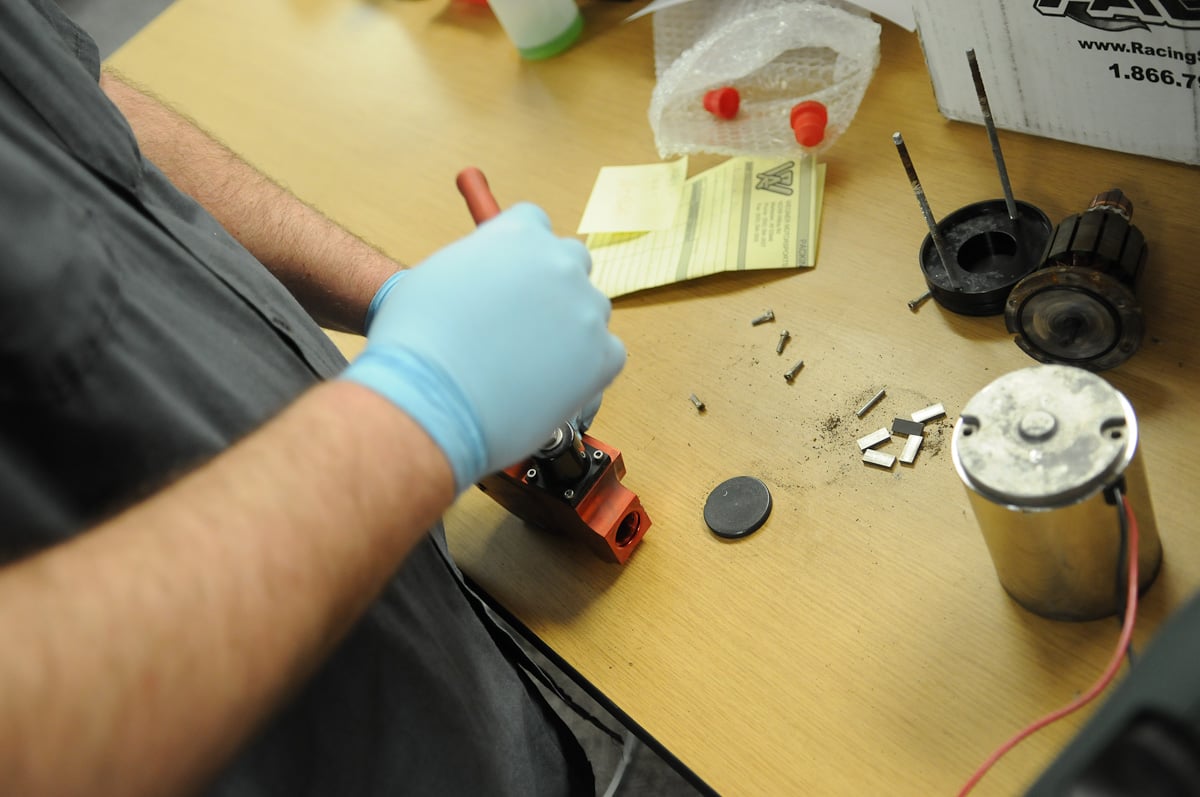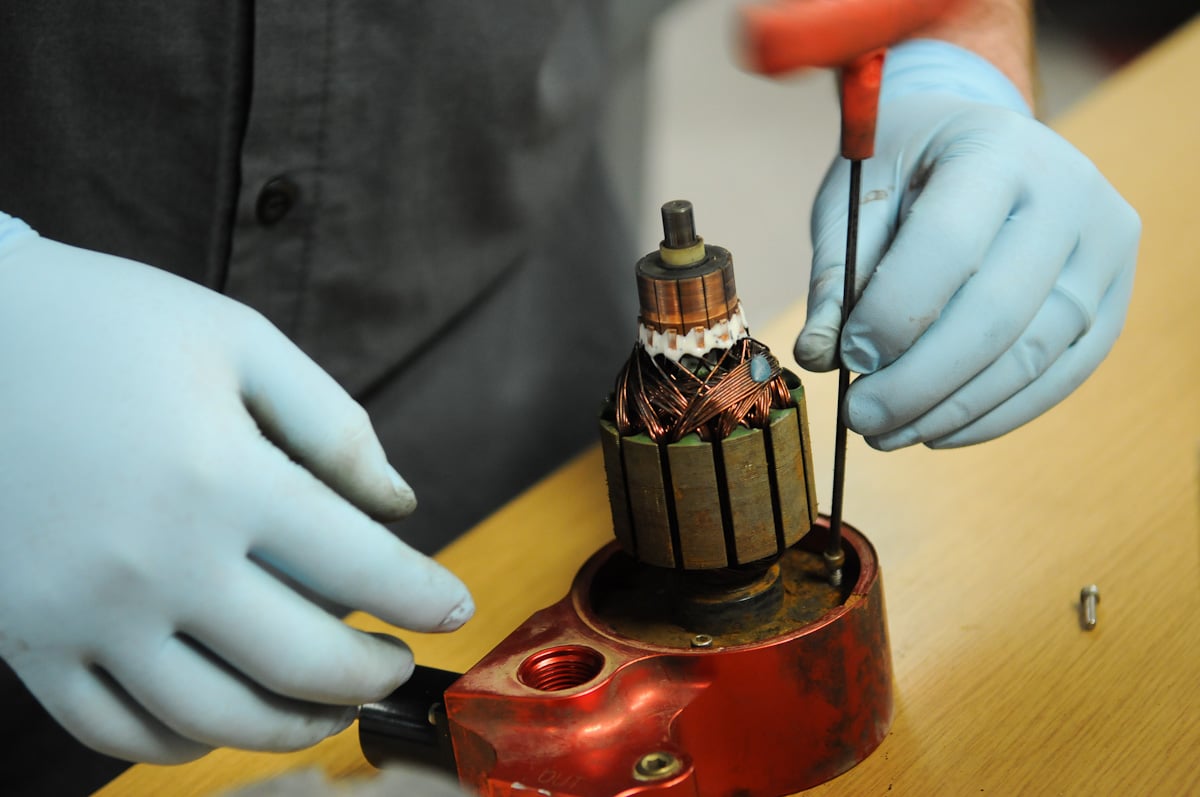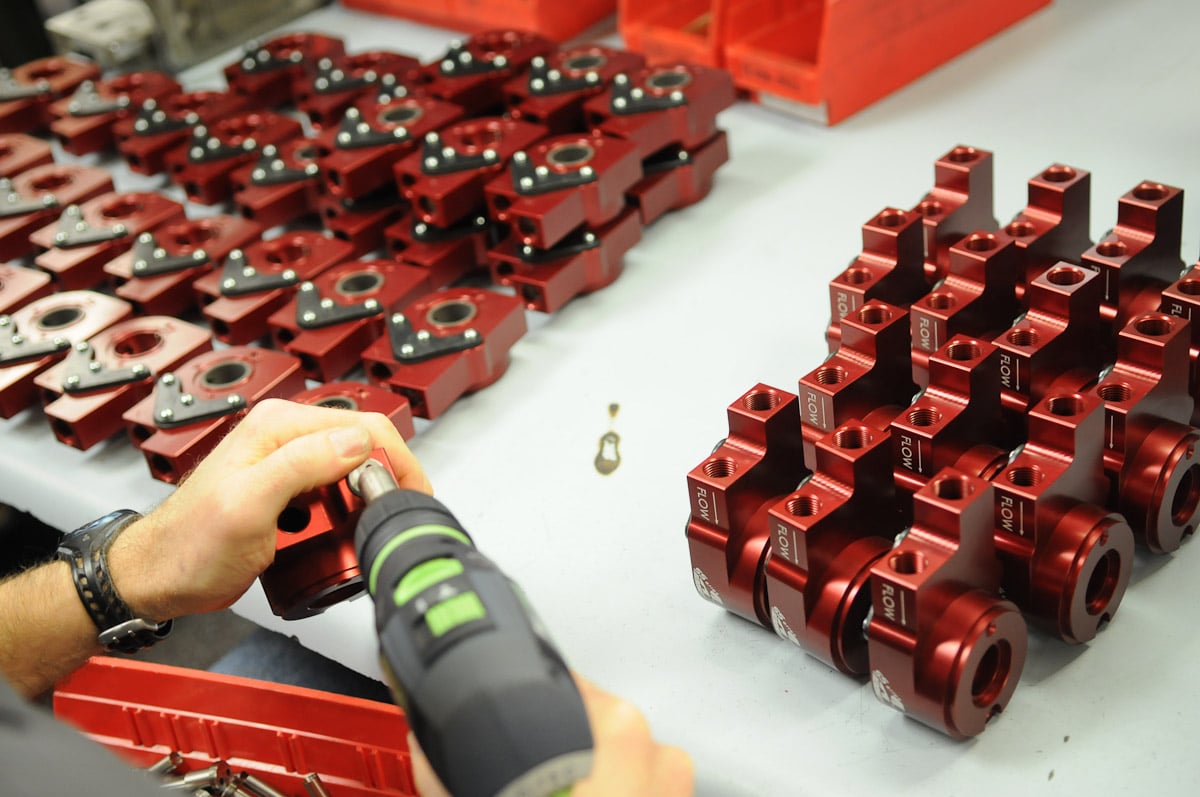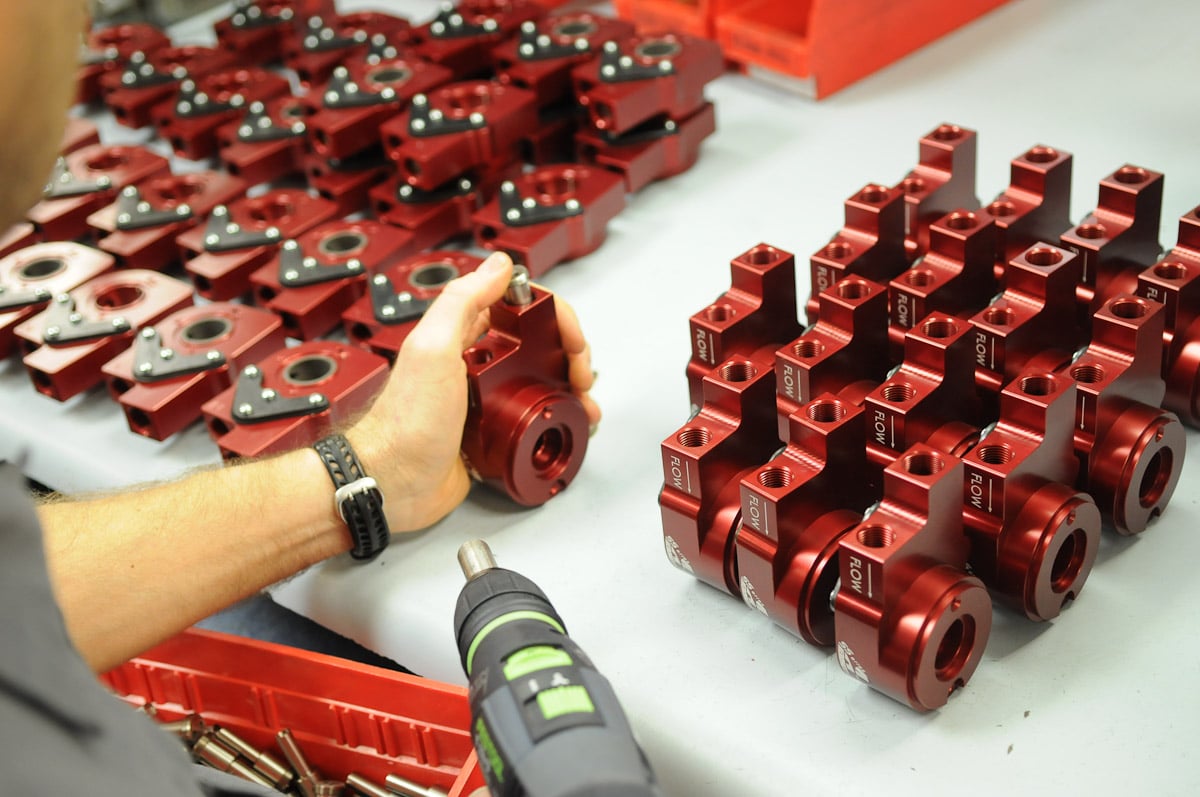We’ve said it before and we’ll state it again — it’s always intriguing to us as we tour different manufacturing facilities to see how much they differ in their entire approach to production. As business majors know, there’s no right or wrong way to go about your business, as long as it’s profitable and successful.
We’ve seen large facilities that do virtually all of the manufacturing in-house, and we’ve seen operations such as Aeromotive [2], who do more with less in terms of the physical size of their facility and their workforce. While you might expect such a major player in the high performance industry to operate from a sprawling campus, you’d be quite surprised how efficient things truly are inside the Aeromotive headquarters.
Founded in the mid-1990’s, Aeromotive is the product of three generations of racing experience that, when combined with aerospace-inspired processes, procedures, and technology, in-house engineering, and true applications knowledge, has formed one of the leading manufacturers of high performance fuel systems and components in the business. Whether it’s the ultra-competitive drag racing world or the extremes of driving thousands of miles in traffic, Aeromotive delivers with integrity and reliability.
Simply put, Aeromotive does it all in regards to high performance fuel systems and components, beginning with unrivaled design and features, on-track testing and support, and strict and efficient manufacturing. In addition to offering an entire range of complete fuel systems, fuel pumps, regulator, rails, filters, and more to racers and hot rodders alike, Aeromotive is also the supplier of fuel systems for such factory-built efforts as the Ford Mustang Cobra Jet and the Dodge Challenger Drag Pak. On any given weekend, you’ll find countless Aeromotive-fueled racers in the winners circle around the world.
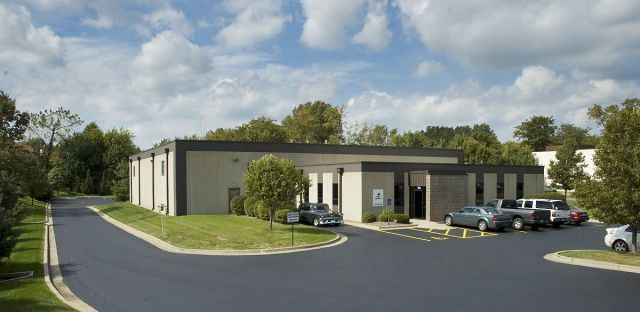 [3]
[3]The Aeromotive headquarters in Lenexa, Kan., located just a short drive from Kansas City, houses all of the internal operations of the fuel system manufacturer.
Company Co-Founder and President Steve Matusek and his staff recently welcomed us inside their facility in Lenexa, Kansas just outside of Kansas City to see how one of the leaders in the fuel system marketplace does things in order that we may bring you the behind-the-scenes look.
Manufacturing And Assembly
As we mentioned above, there’s an endless number of proverbial roads that a business can take to arrive at the same destination, and Aeromotive has perfected their own manufacturing strategy.
Every one of Aeromotive’s products, including pumps, regulators, fuel rails, and other components and accessories are conceived and designed by in-house engineers who create the machine programming to craft the billet aluminum parts. Aeromotive works in close collaboration with three area machine shops who then take those part programs and machine the raw component. Once complete, the orders are brought to Aeromotive, shipped out for anodizing and laser engraving, and returned for final assembly.
Aeromotive's 13109 A10006-Injected Bypass Regulator - one of their most popular products- is assembled from start to finish by one technician.
What this manufacturing strategy does is allow Aeromotive to maintain less overhead in terms of costly machines and the larger facility that it takes to house them. To keep this system flowing properly and keep up with the ebb and flow of customer demand, the sales staff has to maintain excellent forecasting months in advance for the separate parts — including the billet aluminum guts down to the small fittings and caps — from each of their suppliers to ensure the right parts are in stock at the right time and in the right amount for scheduled assembly runs of a given product or product line.
In-House Machining
This 9-axis Okuma unit is utilized not only as a short-run machine for lower volume custom parts, but as a prototyping tool that allows a part to go from from the drawing board to a physical product in just one day.
Aeromotive’s plant does house a single 9-axis Okuma CNC machine, which is used for two purposes. The first of those is for rapid prototyping. Aeromotive engineers can go from a CAD drawing to the machine in a day and have a final part in hand to inspect and test.
“This is great for us, because it allows us to go straight from the drawing board to the machine and have a part to test,” said Aeromotives’ Jesse Powell. “We needed a very versatile machine, because we couldn’t ask one our local machine shops to stop what they’re doing and just run one part for us.”
This in-house Okuma also allows Aeromotive to run higher-end, more expensive parts that are sold in low volume that would be costly to source to other shops.
Here you can see not only the raw materials for prototypes and short-run parts, but an example of the finished product.
Fuel Pumps and Regulators, that for which Aeromotive is best known, are all assembled by hand by a staff of expert technicians who know each and every part inside and out, and in some cases, are assigned to a specific product for which they have the most knowledge of. Production runs of specific parts are completed every few days up to every two weeks, depending upon the demand for the product.
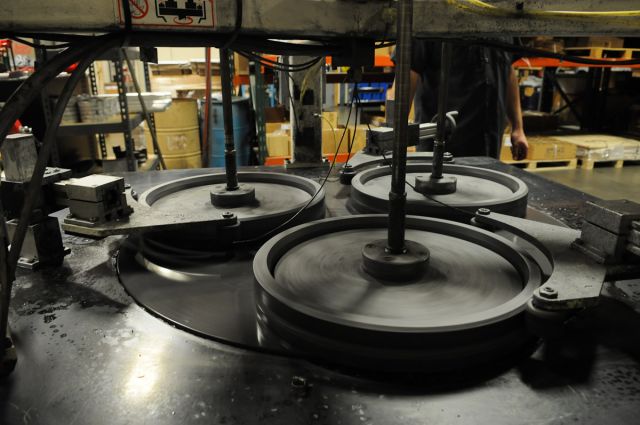 [12]
[12]After arriving from the machine shop, parts are run through this lapping machine that squares the edges of machined goods down to a tolerance of just .0005-inches.
Prior to anodize and stamping, freshly-machined parts are placed on a “lapping” machine that “pancakes” the part and minutely grounds the machined ends flush to within a tolerance of .0005-inch. This ensures every part is perfectly square and the surfaces are in parallel to one another.
Quality Assurance And Rebuilding
We don’t just test one out of a hundred – we test every single one for flow at pressure. Every pump has to meet a specific flow requirement at several different pressures and voltages. – Jesse Powell
“We don’t just test one out of a hundred — we test every single one for flow at pressure. Every pump has to meet a specific flow requirement at several different pressures and voltages,” Powell explained.
Once the parts are tested they’re drained and plugged, and if they’ve met the testing requirement, are date stamped and boxed up. If they don’t pass, they’re disassembled, diagnosed, repaired, and tested once again. This not only ensures a quality part out the door, but provides Aeromotive with record of every pump during the duration of its lifetime as customers send them in for service or call with questions.
Every pump that Aeromotive produces -- be they brand new or freshly rebuilt -- is tested for optimal flow at specific pressures and voltages before earning the seal of approval and boxed for shipping.
One of the beauties of purchasing a pump from Aeromotive is the fact that every pump is infinitely re-buildable.
“Because every pump can be rebuilt you’ll never have to spend that amount of money again,” says Powell. “Say a pump is $350 originally, when it comes back here, we can do a complete and total rebuild and essentially give you a brand new pump and a new one-year warranty for nearly half of that.”
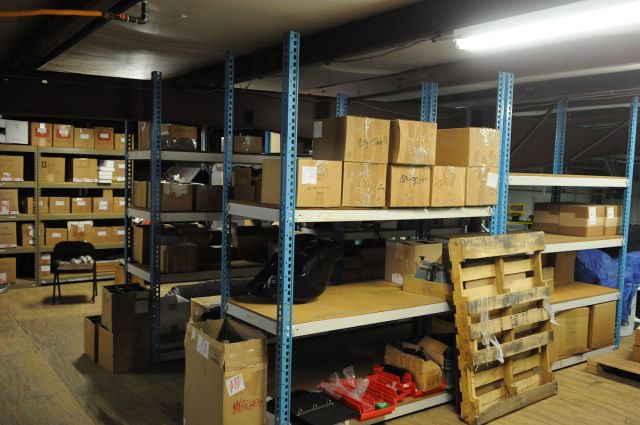 [15]
[15]Every part that Aeromotive has ever prototyped and developed is maintained in a storage area above the assembly room, despite the fact that most - if not all of it - will never actually be manufactured. The items up here include fuel rails for the V-10 Mopar Drag Pak, a Suzuki Hayabusa fuel pump, sending unit, and tank, Cadillac Escalade fuel system parts, and a number of other interesting goodies you're not likely to ever see in the catalog.
Company Co-founder Steve Matusek has always thought a little outside the box when it comes to his racing ventures. At left is a Roush-Yates prepped Ford small block that actually ran in a NASCAR Sprint Cup car that's destined for the new dragster chassis seen in the background. A Competition Eliminator effort has been considered, although Super Comp is the more likely target. At right is the production Ford Modular-based powerplant that propelled Matuseks' former Mustang well into the six-second zone.
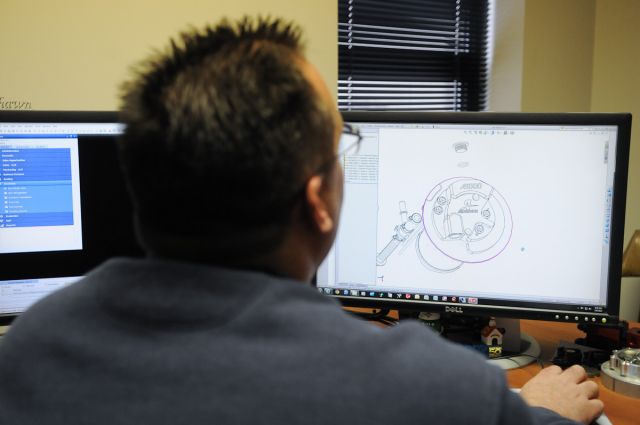 [18]
[18]Shown here is the CAD design drawing of a new Camaro in-take fuel pump assembly, which is being prototyped for production and machined in-house.
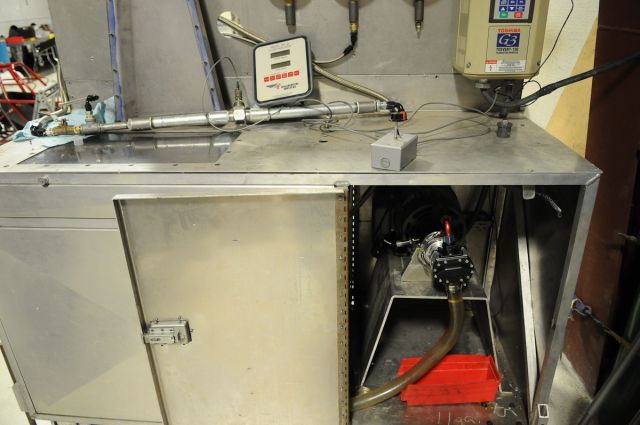 [21]
[21]Hooked up to this particular test stand is a semi-prototype Pro Mod fuel pump just like that utilized on Steve Matuseks' twin-turbocharged Ford Mustang Pro Modified entry since its debut in early 2011. This high-flow pump, capable of supporting in excess of 3,000 horsepower, incorporates a modular design with an interchangeable gear stack for customizing flow specifications and features an innovative and robust construction to cope with high pressures for use in the extreme environs of Pro Modified. Compatible with alcohol and methanol, it can be set up to be driven off the dry sump oil pump, as a cam drive, or in a belt drive setup. In addition to Pro Modified, these are also designed as spec pumps for Nostalgia Funny Cars with 21 gpm ratings.
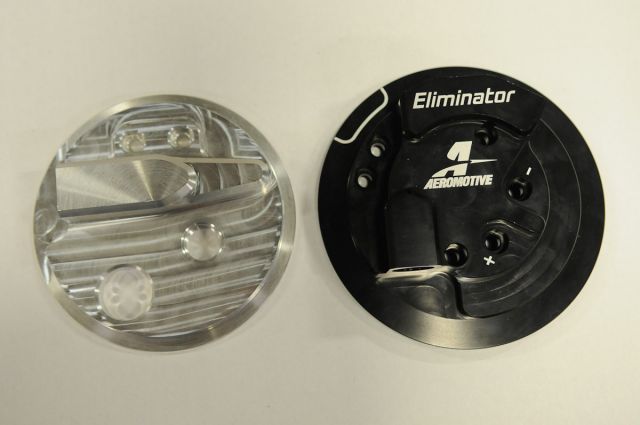 [22]
[22]Seen here is the raw machining of an Eliminator drop-in fuel pump top plate side-by-side with an anodized finished product.
Being rebuilt here is Aeromotive's 11202 A2000 carbureted fuel pump - one of the most popular drag race-style pumps in their lineup and used by a number of NHRA Pro Stock teams. Pumps sent in for a rebuild are restored to virtual brand new condition, tested, and shipped out with a new one-year warranty.
A run of 11203 SS carbureted Fuel Pumps are assembled, much in the way a traditonal assembly line operates in that each step is completed on the full run before moving on to the next. These SS street/strip-style pumps are engineered for 200-750 horsepower engines, making them an exceptional choice for everything from hopped-up daily drivers to hot rodders and bracket racers.
All told, the Aeromotive team has granted very few tours of their facility by the automotive media and few of those have brought their camera along, and as such, we have to thank their entire staff for inviting us inside their impressive offices and facility in order for us to share a look at where all the magic happens to the countless numbers of satisfied Aeromotive customers the world over.
